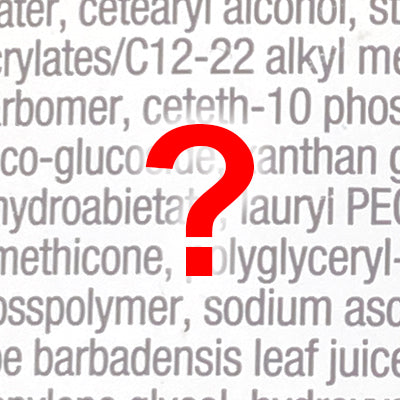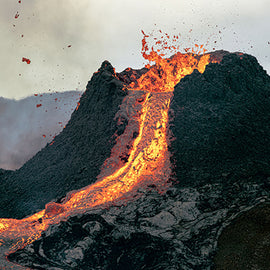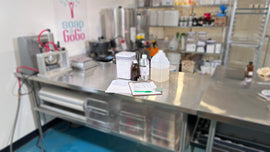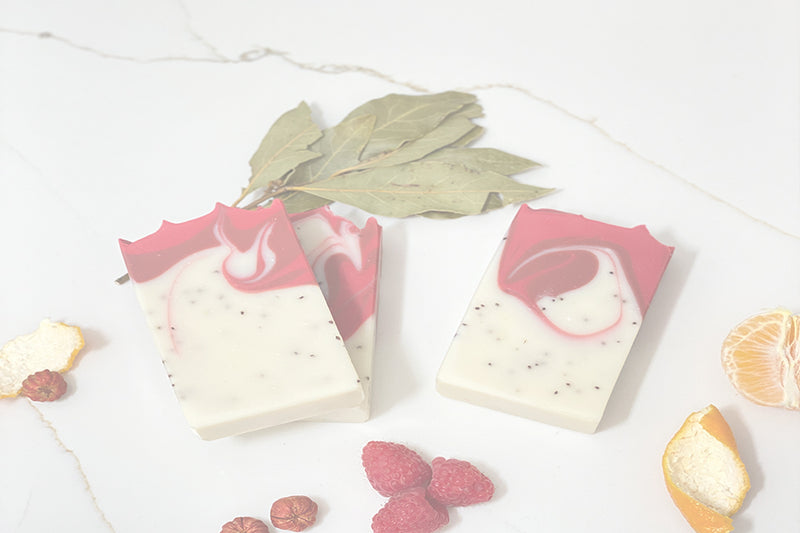March 5, 2022, Scott Elgart
Breaking Down The Label (Seven Seas Shampoo Bar)
Have you ever looked at the ingredients on shampoo and thought something like, “Uh..what the heck is Cocamidopropyl Betaine?!?” Chances are you wouldn’t even try to pronounce it (for the record: co·cami·do·propy·l be·taine). Looking down the list of ingredients you might come across one that you recognize like “sodium chloride” which, of course, is salt. But the rest can look like alphabet soup.
Food labels can be confusing enough but cosmetic labels may as well be written in Sanskrit. There are so many ingredients used in cosmetics – too many to ever list adequately in one post. So to help you become more informed consumers, I’m going to take each ingredient of our Seven Seas shampoo bar and simplify it as much as possible. Once you know what these ingredients are you may start to recognize some of them when examining other shampoo or body wash labels.
First, let’s talk about how the ingredient declaration on a label is organized. The FDA requires that all ingredients be listed in ascending predominance – the highest amount of something in a product to the lowest. Therefore, the first ingredient on a label is the predominant ingredient. (Remember this the next time you check out a food label…)
Ingredient List for our Seven Seas shampoo bar:
Sodium Coco Sulfate - A surfactant or surface acting agent (cleaning agent) that is derived from coconuts. Unlike Sodium Lauryl Sulfate – which has a smaller molecule that can penetrate the skin and can be irritating – sodium coco sulfate is gentler but still very effective at cleaning and producing lots of lather.
Cetearyl Alcohol - An emulsifier and stabilizer. Simply put, it’s the main thickener/hardener in the shampoo bar. It also helps with moisturizing the hair.

Caprylyl Capryl Glucoside - (try saying that 5 times fast!) - Works as a co-surfactant and a solubilizer, which helps to incorporate essential and fragrance oils into the bar.
Cocamidopropyl Betaine - A mild surfactant that supports lather and helps make the Sodium Coco Sulfate milder.
Hydrous Alumina Silicate - Dead Sea clay. This clay comes from the Dead Sea located between Jordan and Israel. It’s incredibly rich in minerals and adds a purifying element as well as the slippy feel of the bar.
Fragrance - Fragrance is proprietary to each manufacturer, therefore, their actual ingredients are not disclosed. Reputable manufacturers will provide safe usage rates and any Prop 65 warnings. The manufacturers we deal with do that and offer fragrances without phthalates (plasticizers).
Sea Salt - salt (sodium chloride).
Phenoxyethanol Ethylhexylglycerin - In short, a preservative. Although they don’t contain water, shampoo bars, like other cleansing products, are exposed to water. Water can be a breeding ground for molds and bacteria. Preservatives inhibit growth of these to help protect the product and user. This ingredient is added at just 1.5% of the formulation to effectively do its job.
Hydrolyzed Quinoa - A quinoa-derived protein that helps strengthen hair.
Tetrasodium EDTA - A chelating (pronounced “KEY-lay-ting”) agent that helps to remove heavy metals (iron, copper, mercury, etc.). It bonds with those metals to be washed down the drain rather than be left on your hair and scalp.
Citric Acid - a compound that occurs naturally in citrus fruits. It’s used to lower the pH of this product to the ideal range for hair and skin.
Kelp - A potent, nutrient-dense powder made from dried Atlantic kelp. You don’t need much of this ingredient to notice the benefits so it exists at only 0.1%.

Mica - A natural earth mineral used as the base for a colorant in cosmetics and other products.
- Titanium Dioxide - An inorganic compound in powdered form that creates whiteness and opacity. This ingredient is part of the mica colorant we use.
- Ultramarine Blue - A blue pigment. This is part of the mica colorant we use.
- Chromium Oxide Green - A green pigment that can be found in nature as Eskolaite. This is part of the mica colorant we use.
Although many are not familiar with these ingredients, we want you to know that they are safe and know what they do for your hair. We are required to label our products a certain way but want to be fully transparent as well!
So the next time you’re shopping, go take a look at the label of a shampoo and see how many ingredients you now recognize – and how many you don’t…




